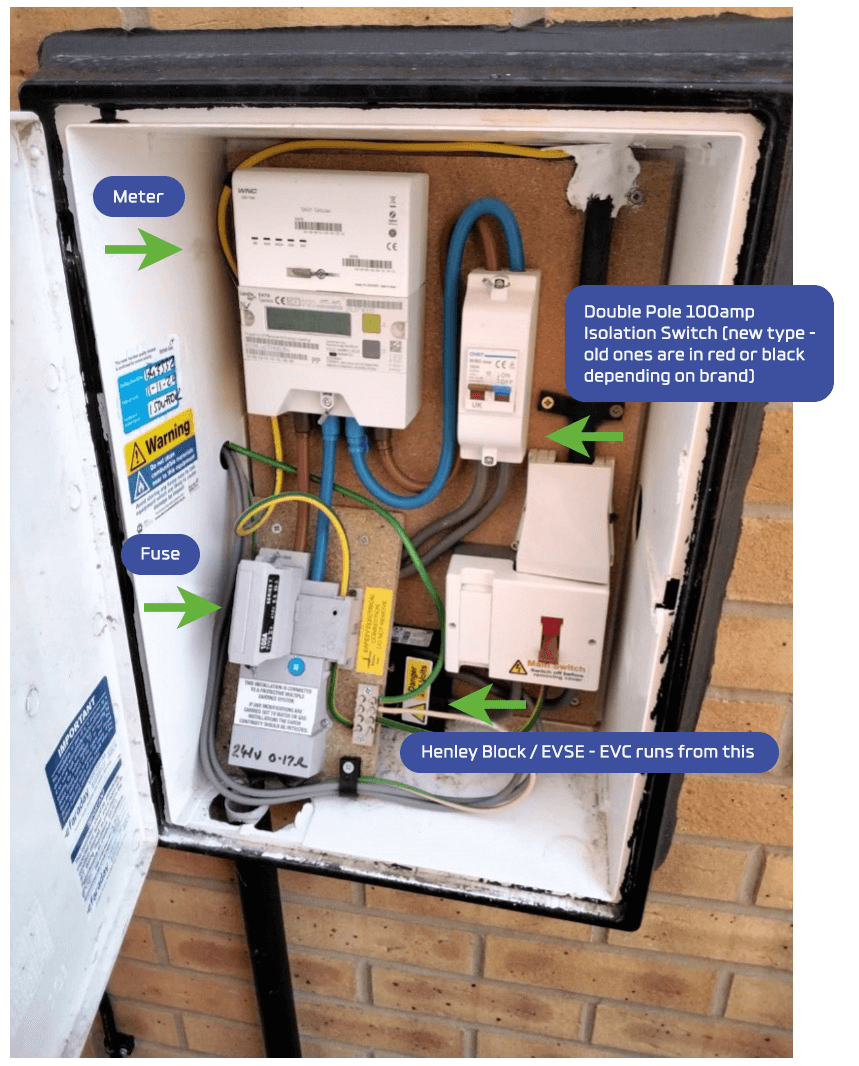Call us: 0330 002 1154
- Home
- Public
Public
- Commercial
Commercial- About
Quick Guide to Isolation Switches
In order to ensure your EV charger install goes smoothly, you must have an isolator switch installed on your electrical system.
What is an isolation switch?
An isolation switch is a device that can be installed on a metering supply and isolates a particular circuit. This enables the supply to be de-energised after the meter and prevents a current from passing through. Most commonly, an isolation switch is located inside a meter box. It sits after the meter and before the consumer unit.
What is its purpose?
An isolation switch acts as a circuit breaker on your mains electrical supply so that any electrical work (such as an EV charger or solar installation) taking place at your home can be completed safely by an electrician or engineer. When the switch is turned off, there is no power after the isolation switch, which allows any maintenance work to be completed safely.
What does an isolation switch look like?
Here is what a typical household (domestic) meter box looks like. The isolation switch can be seen in the top centre.

Who’s responsible for installing an isolation switch?
An isolation switch needs to be installed by your energy supplier. Safety regulations state that the electricity supply needs to be de-energised via the cut-out. As private electricians are not permitted to work on the cut-out, your energy supplier needs to schedule an engineer to go to your property and install one.
How can I arrange an isolation switch install?
Contact your energy supplier to get an isolation switch installed. It needs to be scheduled as a non-essential maintenance job. This is a common request and is usually carried out within 3-4 weeks and costs approx. £100, although this varies by supplier.

The smart EV charge point company
enquiries@efaraday.co.uk
0330 002 1154Aviation House, Swordfish Way,
Sherburn in Elmet, Leeds, LS25 6NG. UK
Company registration number 12983787
Registered office is Camburgh House, 27 New Dover Road, Canterbury, Kent, United Kingdom, CT1 3DN
©2024 eFaraday. All rights reserved. Privacy Terms & ConditionsThe smart EV charge point company
enquiries@efaraday.co.uk
0330 002 1154Aviation House, Swordfish Way,
Sherburn in Elmet, Leeds, LS25 6NG. UK
Registered office is Camburgh House, 27 New Dover Road, Canterbury, Kent, United Kingdom, CT1 3DN
Company registration number 12983787
©2024 eFaraday. All rights reserved.
- Commercial
eFaraday is no longer trading and has gone into administration. For further details, please contact the administrators at http://www.krestonreeves.com



